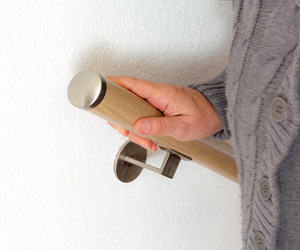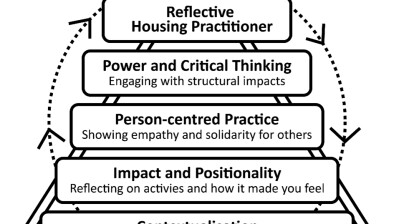Opinion: The critical role of home improvement services for older adults’ safety and well-being

Jenny Preece, Jamie Brown, Jan Gilbertson, Rosie Smith and Vikki McCall (from Sheffield University, Building Research Establishment (BRE), Sheffield Hallam University and Stirling University) outline the progress of an ongoing project to determine the impact of home improvement services on older adults.
The cost of poor housing
In addition to creating a literature review better to understand the wider context of home improvement services, BRE is delivering work around the cost of poor housing to the NHS among older people. Key findings include that in 2018/19, around 1.2 million homes (11%) with a Household Reference Person (HRP) aged 55 or older have at least one Category 1 HHSRS hazard (defined as a ‘poor home’). Around 821,000 homes with one or more of these hazards were lived in by at least one person with a long-term illness or disability. BRE is also updating the Centre for Ageing Better Adaptations Model (Garrett and Roys, 2017; pg. 83) to understand the population health impact and monetary value of home adaptations by modelling data from the English Housing Survey (EHS). Interviews with members of the industry are also being planned.
In-depth case studies
Case study work with eight home improvement services across England is progressing well. We have conducted interviews, focus groups, and workshops with staff, stakeholders, and service users. The case studies will offer insights into what works and why in delivering a good home improvement service. Early findings demonstrate the nature and scale of the assistance provided by home improvement services. Some services are becoming more expansive to respond to growing demand. At a time when pressure on Disabled Facilities Grant funding is increasing, the ability to adapt homes is affected by rising costs and the cap on means testing home improvement services is innovating by bidding for other funding sources to develop new services.
There are trends towards integration in some areas, as services work with health partners and Integrated Care Boards to utilise the Better Care Fund. Work improving hospital discharge is also becoming more common and offers high potential to demonstrate the impact services make. However, a longstanding and highly skilled staff base underpins much of this work. Teams require broad skills and technical know-how to do their jobs. Listening to clients and getting communication right is also crucial to establishing trust and a positive customer journey.
The wider sector for home improvement
The quantitative work strand of the HIS evaluation is in the data collection stage. An online survey collects information from Home Improvement Service providers on their funding sources, staffing costs and capacity, services they provide, and the benefits of their service provision. We are also undertaking analysis of secondary data sources. We will use statistical data from the national government to understand the broader picture of the numbers and types of grant providers offered. Finally, to support an understanding of the impact of home improvement services, case study evidence and responses to the English Longitudinal Study of Ageing will be used to understand how many older people have home adaptations, the types, and the differences they make.
Learning from lived experience
We have completed three Serious Game workshops and three interviews, with more workshops scheduled on 30th May in Brent and 27th June in Manchester. We have a total sample so far from these of around 100 people (3 interviews, 81 professionals in Sheffield, 4 in Liverpool, 12 in Leeds) with a projected 35 people still to take part in Brent and 7 in Manchester.
Key points emerging from these events include the importance of communication, information and advice, control, design, and the need for person-centred solutions. Home improvement services are vital for everyday essential activities related to bathing, sleeping, eating, and getting around homes and communities. But there is a clear, unmet need. Many people are trying to develop creative solutions but often do not know where to get help.
Those accessing and needing services are varied, with many different home improvement journeys. We find control crucial – sometimes, things are being done in people’s homes where they feel unheard or unconsulted. Even with a successful adaptation, individuals can feel disempowered and forced into changes within their home that make them feel uncomfortable and challenge their sense of self. Therefore, communication and appropriate information and advice are crucial in a positive experience, as even small changes can impact health, well-being and feelings of independence.
Stakeholder engagement
Stakeholder engagement has been embedded in the project from the very start. By bringing in different voices and gaining deeper insight, we avoid doing the research in isolation and disseminating an ‘end product’ that does not connect with the audiences we need to reach. Our recent activities include a series of forums bringing together strategic leads and customer-facing staff from across our case study services. Our most recent forum focused on how services identify needs in their local area and whether there are gaps in provision. We also discussed the customer journey, what it means to be ‘person-centred’, and the required skills. That took us nicely into thinking about how services develop the range of skills that are needed within the workforce. We have also been engaging with the broader home improvement sector at Foundations events in Newcastle and Manchester, facilitating discussions around outcomes and impact with over 160 practitioners. These events give an immediate sense of the diversity of provision and practitioners’ engagement in promoting home independence, safety and dignity for service users. Finally, we discussed the evaluation at a CaCHE knowledge exchange hub meeting, where there was a lot of engagement and interest in the work.
This article was originally published on the CaCHE website.








